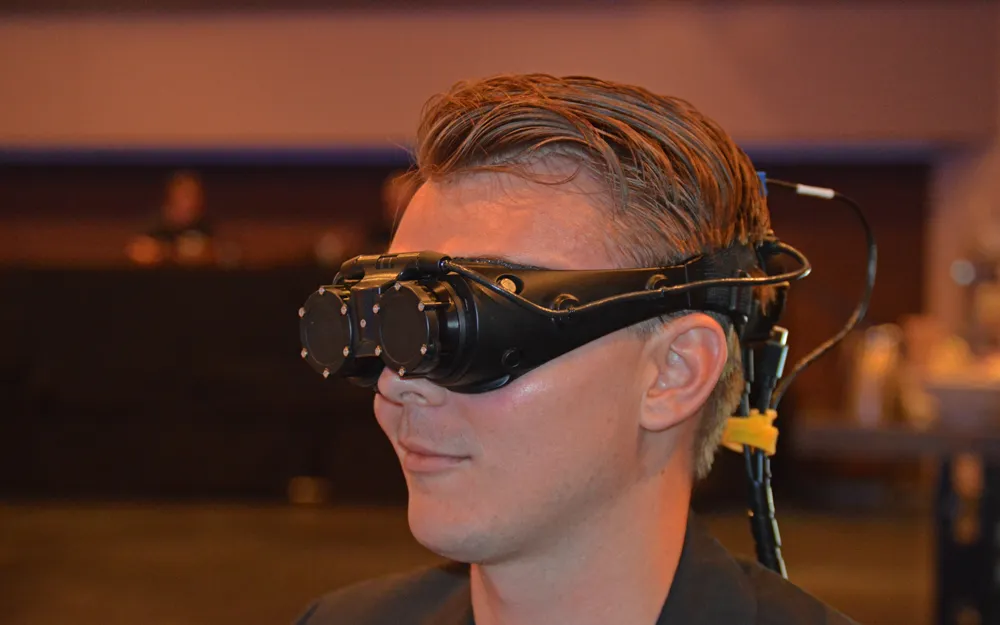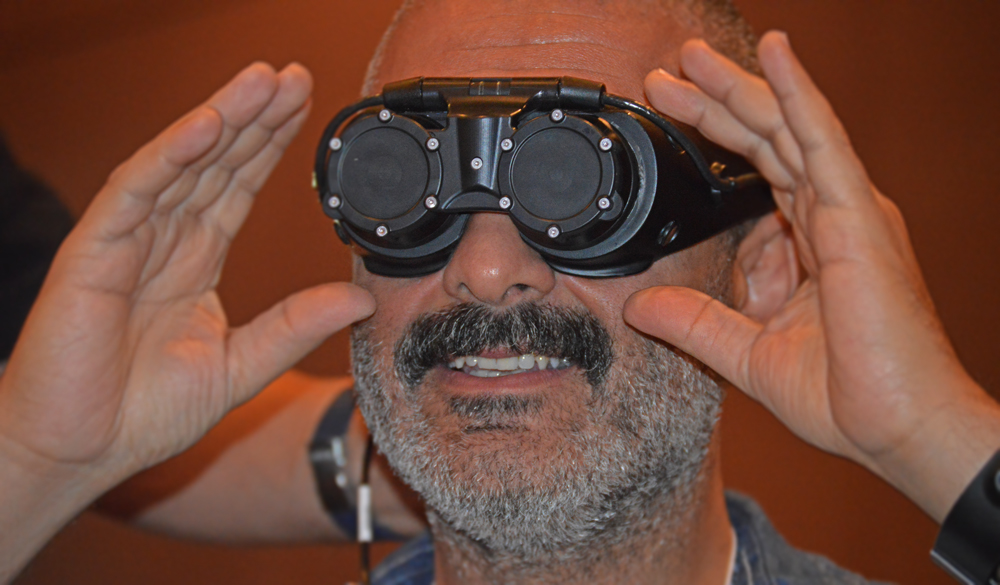“What I think is going to be really cool is as the form factor keeps on getting smaller and smaller, [it] stops being big goggles or headset, but instead it just looks like normal glasses or sunglasses.” – Mark Zuckerberg
The idea of a glasses style form factor is one of the great dreams of VR – something that is closer to glasses than it is ski goggles. Since the 80s and 90s, when VR really first emerged screen sizes have prevented that dream from becoming a reality; but the smartphone market has pushed the mini display market forward in the last ten years at a faster rate than ever before. Founded in 1993 during the height of virtual reality’s first revolution, eMagin is one of the companies pushing the boundaries of mini display technology. Today I had a chance to try out the company’s latest display technology – a pair of 2K micro OLED displays integrated into a pretty darn cool looking HMD.
Still in a prototype stage, eMagin’s HMD (which right now is nameless) shows quite a bit of promise, despite a number of shortcomings we will get to in a moment. First and foremost, the focus is on the displays which are among the crispest I have seen in VR – despite a low refresh rate under the demo conditions I received. At 2K resolution and running on an Alienware laptop attached to an external GPU housing containing a GTX 960, the HMD was only able to support a 60Hz refresh rate at the full resolution. Speaking with Dan Cui, eMagin’s VP of Business Development, he claims that the HMD in its current state can run at 85Hz at full resolution on a proper rig which would put it between the DK2 and Crescent Bay – meaning that issues I noted with the refresh rate may be nearly moot. Additionally, Cui was confident that with “some upgrades” eMagin would be able to get the displays running at 120Hz – which would put it on par with the Sony Morpheus.
When still, display itself was gorgeous albeit one current caveat – it was only a two color display, only red and green LEDs, no blue. The current prototype hardware was originally developed for Air Force pilot training and the lack of blue is purposeful because fighter pilots usually wear lenses that filter out blue light in order to increase the contrast of objects in the skies. Cui says that an updated version of the prototype with blue pixels included would be ready “in a few months.” Despite the lack of color, objects in the HMD were amazingly crisp even at a bit of a distance and I noticed absolutely no screen door effect. The demo I was shown was fairly simplistic – a rendering of a room in a house, but despite feeling like I was trying a colorblindness demo I definitely achieved a momentary feeling of Presence – and then I moved my head. It is a little difficult to compare the display to those on the Crescent Bay, HTC Vive, or Sony Morpheus because of the color, but in terms of crispness it was a noticeable degree better.
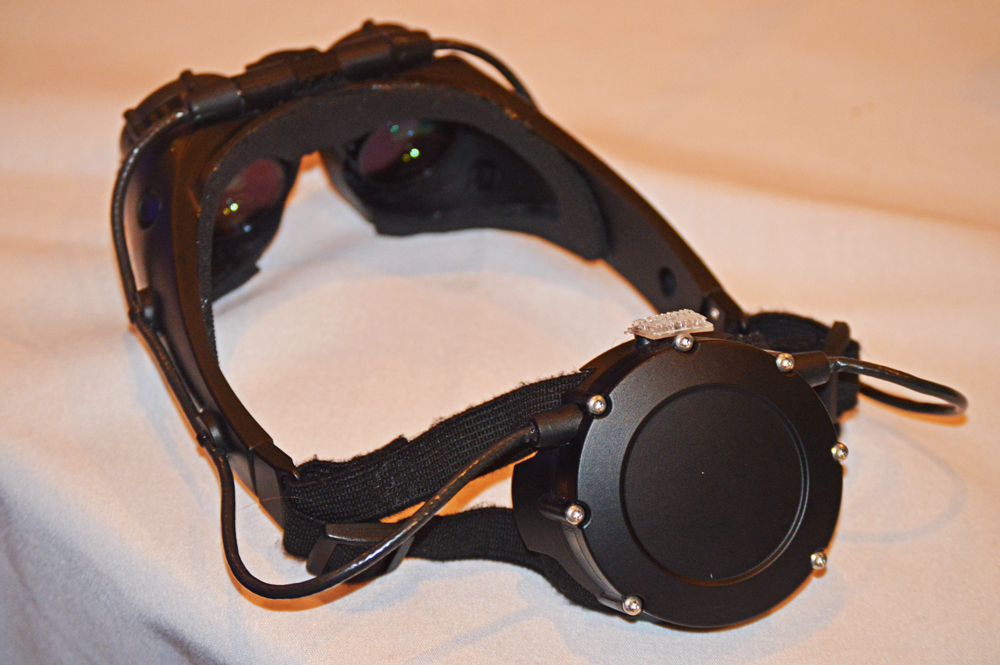
The headset’s electronics are embedded in a disk on the back of the device. The disk contains a DisplayPort 1.2 which transmits the video to the device using Low Voltage Differential Signaling (LVDS) video processing standard that supports the high level of bandwidth needed for the displays. “Basically it is conversion between the dataport, signaling and the LVDS,” says Cui. During my demo Cui held the cords in place because the cords on the current prototype have a tendency to fall out when you move your head. As of right now, the headset only has an embedded IMU for headtracking, but Cui says the displays could work using “something like Lighthouse” to add positional tracking.
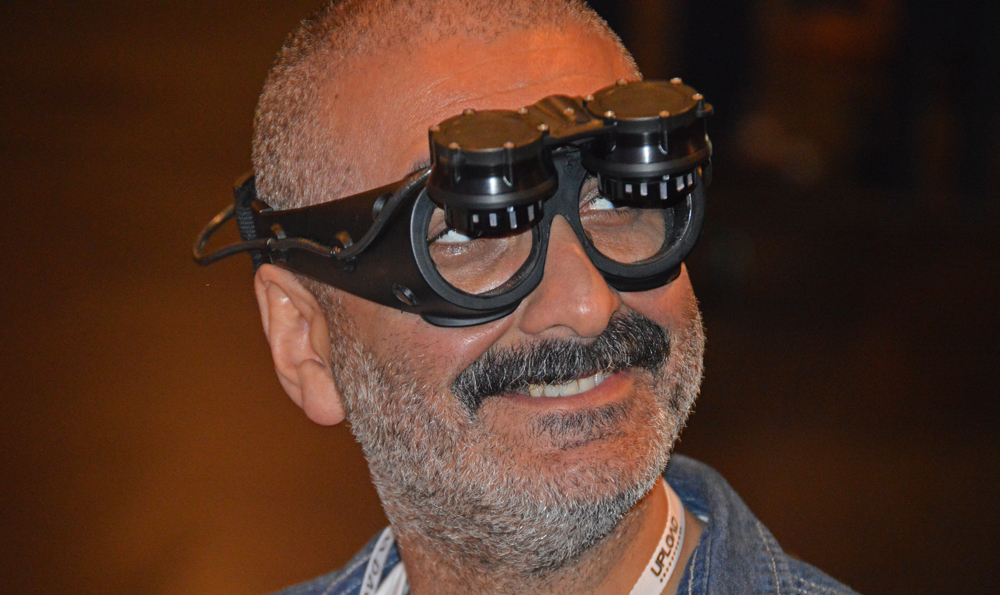
The headset also manages to achieve a 80 degree horizontal and vertical FOV with a diagonal 110-degree FOV – which is fairly impressive given the incredibly small distance between the lens and the screen. Although having put my girlfriend through more than a few demos – I am sure that the 15mm of eye relief on this current HMD might be a little low (eyelashes, mascara, etc.).
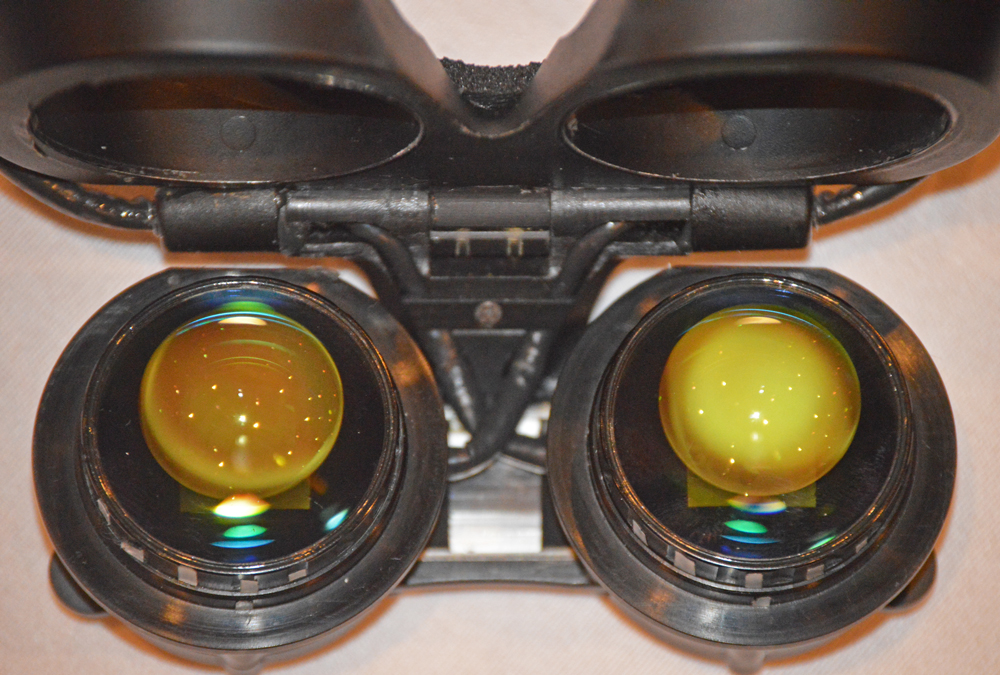
Besides the displays, the form factor was is an obvious plus. The headset itself was extremely comfortable, fitting on my face nicely like a pair of swimming goggles. It felt very balanced, with the technology embedded in the puck on the back, and the displays and custom glass lenses in the front. The flip up feature was also very nice – and would be one I would welcome in HMDs of the future.
All in all, the HMD was solid for exactly what it was intended to be – a tech demo showing off eMagin’s microdisplay technology and how it could work with VR. Cui says that eMagin is “in talks with all the major headset companies” about integration of their display technology. If Cui’s belief that these microdisplays will manage 120Hz in the near future proves true – we could easily see the form factor of HMDs reach closer to Zuckerberg’s vision much sooner than many may have anticipated.

